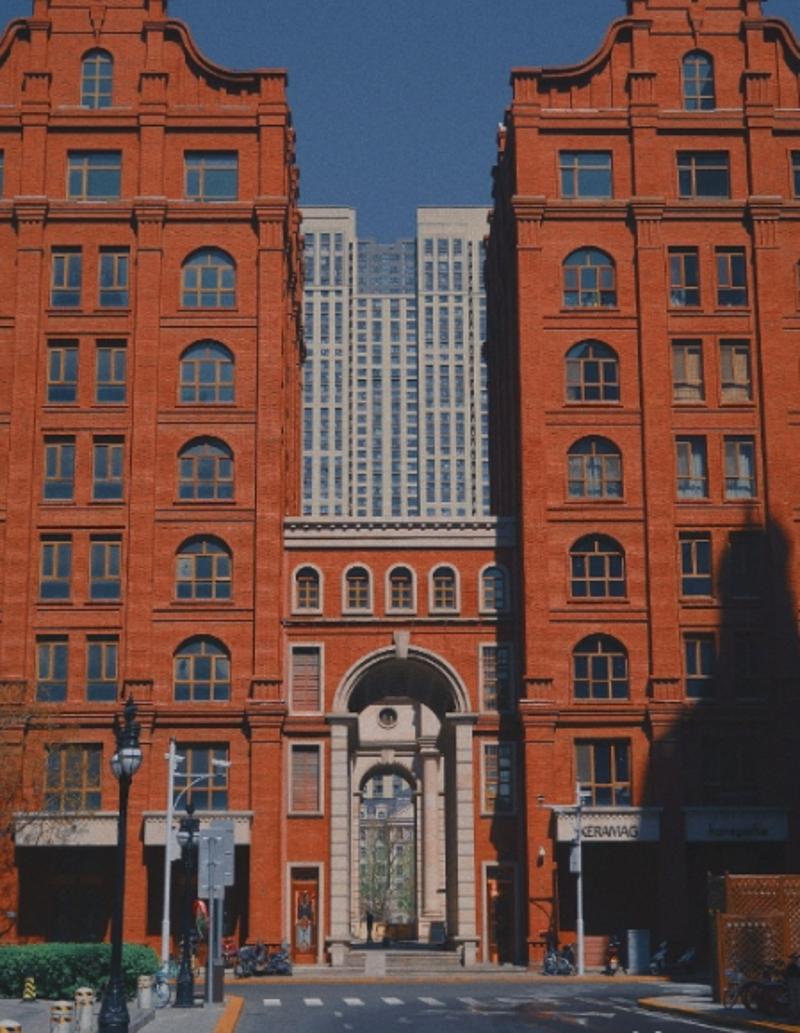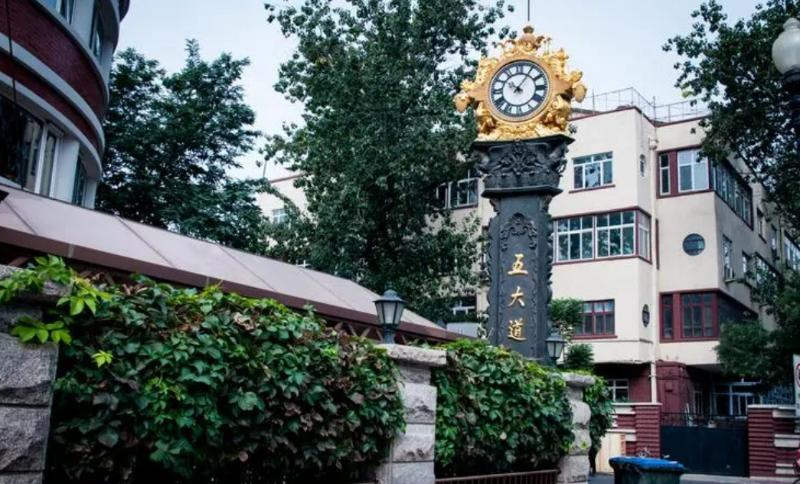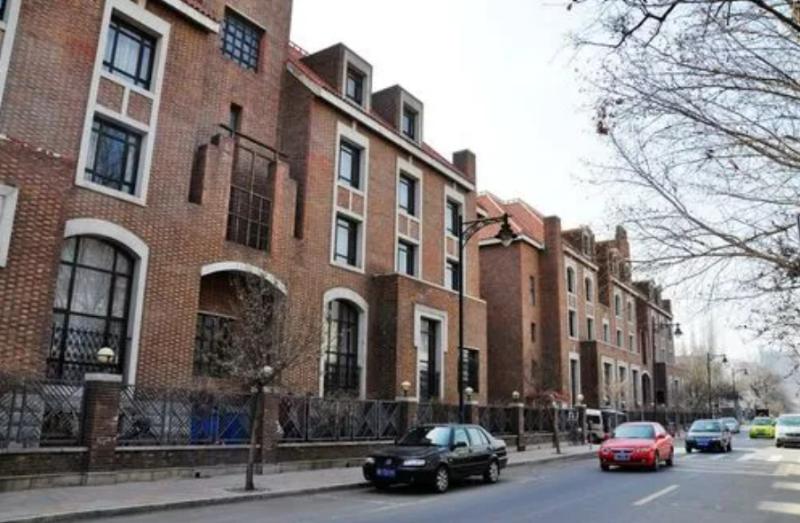Architectural Styles of Tianjin's Wudadao
The "Five Avenues" area was originally a pit in the south of Tianjin. In 1919, the British Concession began to develop and construct this area. As a witness to the collision and blending of Chinese and Western trends in modern Chinese history, the "Five Avenues" architectural style presents a variety of architectural features such as Western classical, Baroque, eclecticism, modern architecture, and a combination of Chinese and Western architecture, and has become the "Architecture Expo of All Nations"
Reference: Tianjin Wudadao: A Cultural and Historical Tourism Area
Architectural Diversity in Wudadao
1. English Style
Characteristics: The English-style buildings in Wudadao typically feature Gothic and Tudor influences. They often include elements such as steeply pitched roofs, tall, narrow windows with small panes, and elaborate masonry.
Examples: The grand residences along Machang Road, with their stately facades and lush gardens, epitomize this style.

2. French Style
Characteristics: French-style buildings are characterized by their elegant and sophisticated design, often incorporating ornate facades, wrought iron balconies, and large windows. The streets lined with French plane trees add to the romantic ambiance.
Examples: Munan Road is a prime location for French architecture, featuring buildings that exude charm and grace.

3. Russian Style
Characteristics: Russian-style buildings are notable for their robust and imposing structures, often with onion domes and colorful facades. The architecture reflects a blend of Eastern Orthodox and traditional Russian influences.
Examples: Some of the historical buildings on Dali Road exhibit these distinctive characteristics, standing out with their bold designs.

4. Italian Style
Characteristics: Italianate architecture in Wudadao is distinguished by its classical Roman influences, including arched windows, colonnades, and symmetrical layouts. These buildings often have a sense of grandeur and timelessness.
Examples: The villas on Changde Road showcase this style, with their stately presence and attention to detail.

5. German Style
Characteristics: German-style buildings in Wudadao exhibit elements of the German Renaissance and Bauhaus movements. They often feature clean lines, functional design, and a focus on craftsmanship. The use of brick and stone, along with decorative gables, are common in these structures.
Examples: Changde Road houses several examples of German architectural influence, characterized by their solid construction and meticulous detail.
Historical Development of Wudadao
1. Machang Road (马场道)
History: Stretching 1740 meters, Machang Road is the longest of the Wudadao streets. It was developed by the British concession in 1861, named after the horse racing fields that were established by the British.
Significance: Today, it is a prominent tourist attraction, known for its historical buildings and vibrant atmosphere.
2. Munan Road (睦南道)
History: Developed by the French concession in 1895, Munan Road spans 1220 meters. It was named after a French consul and is lined with French plane trees.
Significance: The road is renowned for its romantic ambiance and elegant architecture, making it one of the most picturesque streets in Tianjin.
3. Dali Road (大理道)
History: Dali Road, developed by the British in 1914, stretches 1740 meters. It was named after a British consul and features a variety of European architectural styles.
Significance: The road attracts numerous visitors who come to admire its unique blend of architectural influences.
4. Changde Road (常德道)
History: Developed by the German concession in 1900, Changde Road is 1174 meters long. It was named after a German consul and is noted for its German Renaissance architecture.
Significance: The road’s architectural style provides a distinct visual experience, reflecting the historical German influence in Tianjin.
5. Chengdu Road (成都道)
History: Chengdu Road, developed by the British in 1895, is 1261 meters long and named after a British consul in Chengdu.
Significance: Despite being the shortest, Chengdu Road is rich in cultural history and architectural diversity.
Cultural Significance of Wudadao
The architectural diversity of Wudadao not only showcases Western styles but also incorporates Chinese elements, creating a unique cultural blend. The buildings reflect the historical interactions between China and the West during the concession period. The preservation of these buildings offers a glimpse into the past and the cultural exchanges that have shaped Tianjin.
1. Architectural Fusion
Western Influence: The buildings exhibit a range of Western architectural styles, including Gothic, Baroque, and Renaissance.
Chinese Elements: Many buildings incorporate traditional Chinese motifs and designs, blending Eastern and Western aesthetics.
2. Historical Landmarks
Famous Residents: Many notable figures, such as Zhang Xueliang and Zhang Zizhong, have resided in Wudadao, adding to its historical significance.
Cultural Preservation: The area is home to old shops, traditional craft workshops, and historical sites, preserving the cultural heritage of Tianjin.
3. Modern Use and Tourism
Tourist Attraction: Wudadao is a popular destination for both domestic and international tourists, who come to admire the architecture and experience the historical ambiance.
Cultural Events: The area hosts various cultural events, exhibitions, and festivals, further enhancing its role as a cultural hub.
The Unique Charm of Wudadao
The unique architectural charm of Wudadao stems from the fact that many early residents, who were Chinese, had limited understanding of Western architectural principles. This led to a creative adaptation of styles, with local builders incorporating their own artistic sensibilities, resulting in a distinctive and eclectic architectural landscape.
1. Creative Adaptations
Design Freedom: The lack of rigid adherence to Western styles allowed for creative freedom in design, leading to unique and innovative structures.
New Aesthetic: The fusion of Western and Chinese elements created a new aesthetic that is both visually appealing and culturally significant.
2. Mingyuan Square
Historical Significance: Built in 1920, Mingyuan Square is one of the core architectural landmarks of Wudadao. It serves as a cultural and recreational space for the community.
Tourist Attraction: The square, with its European-style sports stadium, is a popular spot for photography and cultural events.
Q&A
1. What makes Wudadao's architectural style unique?
Answer: Wudadao's architectural style is unique due to its eclectic mix of Western classical, Baroque, Renaissance, and modern styles, blended with traditional Chinese elements. This fusion was often a result of local builders adapting Western designs to Chinese tastes, resulting in a distinctive and innovative architectural landscape.
2. How does Wudadao serve as a cultural and historical repository?
Answer: Wudadao serves as a cultural and historical repository by preserving buildings that reflect the architectural and cultural exchanges between China and the West during the concession period. It houses historical landmarks, old shops, and traditional craft workshops, offering insights into Tianjin's rich cultural heritage and historical development.